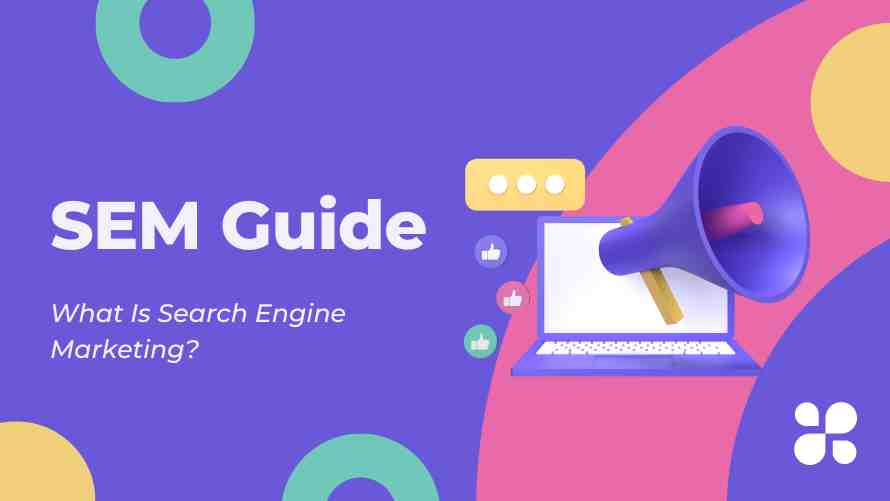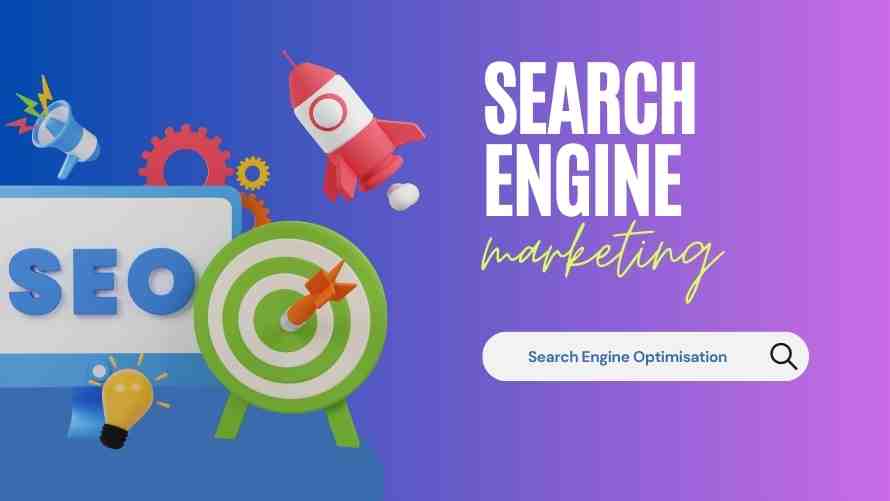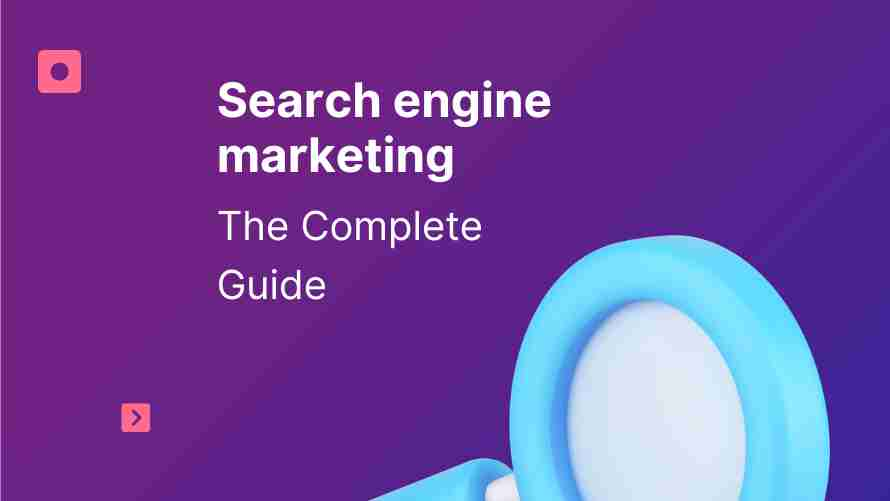Introduction
Search engine marketing, commonly known as SEM, is the practice of promoting and advertising websites through paid advertising. And other tactics in order to increase visibility on search engine results pages (SERPs).
SEM is a crucial component of digital marketing, and can help businesses of all sizes drive traffic, generate leads, and increase revenue.
SEM vs. SEO: What’s the Difference?
While SEM and SEO (search engine optimization) are both tactics used to increase visibility on SERPs, they differ in terms of strategy, tactics, and goals. SEO is the practice of optimizing a website’s content and structure to rank higher in organic search results. In contrast, SEM includes paid advertising on search engines. Such as pay-per-click (PPC) ads, in addition to other tactics like keyword research and targeting.
While SEO aims to improve organic search rankings, SEM is focused on driving traffic through paid advertising. However, both strategies are important components of a comprehensive digital marketing plan. And should be used in conjunction with each other to achieve optimal results.
In the next section, we will discuss how SEM is used in marketing and the various tactics involved.


How is SEM Used in Marketing?
There are several tactics involved in SEM, including PPC advertising, keyword research, and ad targeting. PPC advertising involves placing ads on search engine results pages and paying each time a user clicks on an ad. This method allows businesses to target specific keywords and phrases that are relevant to their products or services. And can be an effective way to generate traffic and conversions.
Keyword research is another important component of SEM, and involves identifying the keywords and phrases. That potential customers are searching for. By targeting these keywords with PPC ads and optimizing website content accordingly. Businesses can improve their visibility on SERPs and drive traffic to their sites.
Ad targeting is also a key aspect of SEM, and involves tailoring ads to specific audiences based on demographics, interests, and other factors. By targeting the right audience with the right messaging. Businesses can increase the likelihood of conversions and maximize their return on investment (ROI).
Overall, SEM is used to drive traffic, increase conversions, and generate revenue for businesses. By leveraging a combination of tactics. Like PPC advertising, keyword research, and ad targeting, businesses can effectively reach their target audiences and achieve their marketing goals. In the next section, we will discuss the benefits and advantages of SEM over other forms of digital marketing.
SEM Strategy: Best Practices and Tips
Developing a successful SEM strategy requires careful planning and execution.
Here are some key elements of a successful SEM strategy, along with tips for optimizing SEM campaigns:
Goal Setting
Before launching an SEM campaign, it’s important to set clear goals and objectives. These could include increasing website traffic, generating leads, or driving sales. By setting specific goals, businesses can better measure the success of their campaigns and make adjustments as needed.
Audience Targeting
SEM campaigns should be targeted to specific audiences based on demographics, interests, and other factors. By targeting the right audience, businesses can increase the likelihood of conversions and maximize their ROI.
Keyword Research
Keyword research is a crucial part of SEM, and involves identifying the keywords and phrases that potential customers are searching for. By targeting these keywords with PPC ads and optimizing website content accordingly, businesses can improve their visibility on SERPs and drive traffic to their sites.
Ad Copy
The ad copy used in SEM campaigns should be compelling and relevant to the target audience. This can help increase the click-through rate (CTR) of ads and improve the likelihood of conversions.
Landing Pages
Landing pages should be designed to effectively convert visitors into customers. They should be relevant to the ad copy and include a clear call-to-action (CTA) that encourages visitors to take the desired action, whether that’s filling out a form, making a purchase, or signing up for a newsletter.
Bidding Strategies
Bidding strategies should be carefully planned to maximize ROI. Businesses should consider factors like keyword competition, ad placement, and budget when determining their bidding strategy.
By following these best practices and tips, businesses can optimize their SEM campaigns and achieve their marketing goals. In the next section, we will discuss the advantages and benefits of SEM over other forms of digital marketing
Advantages and Benefits of SEM
There are several advantages and benefits of SEM over other forms of digital marketing, including SEO and social media marketing. Here are some key advantages and benefits of SEM:
- Increased Visibility: SEM allows businesses to achieve higher visibility on SERPs and reach a wider audience than other forms of digital marketing. By targeting specific keywords and phrases, businesses can increase their visibility to users who are actively searching for products or services like theirs.
- Targeted Traffic: SEM allows businesses to target specific audiences based on demographics, interests, and other factors. This can help increase the likelihood of conversions and maximize ROI.
- Measurable ROI: SEM provides businesses with detailed analytics and reporting, allowing them to track the success of their campaigns and measure their ROI. This makes it easier for businesses to make data-driven decisions and adjust their campaigns as needed.
- Quick Results: Unlike SEO, which can take months to see results, SEM can generate quick results and help businesses achieve their marketing goals in a shorter amount of time.
- Flexibility: SEM allows businesses to adjust their campaigns in real-time based on performance and results. This flexibility makes it easier for businesses to adapt to changes in the market and stay ahead of the competition.
Overall, SEM offers several advantages and benefits over other forms of digital marketing, including increased visibility, targeted traffic, and measurable ROI. By leveraging SEM as part of a comprehensive digital marketing strategy, businesses can effectively reach their target audiences and achieve their marketing goals.
In the next section, we will discuss examples of successful SEM campaigns and the tactics and strategies used to achieve success.
Examples of Successful SEM Campaigns
There have been many successful SEM campaigns across various industries and businesses. Here are some examples of successful SEM campaigns and the tactics and strategies used to achieve success:
- HubSpot: HubSpot is a software company that offers a variety of marketing, sales, and customer service tools. Their SEM campaigns have been highly successful in driving traffic and generating leads. Some of the tactics and strategies used by HubSpot include targeting long-tail keywords, optimizing ad copy and landing pages, and retargeting visitors who did not convert.
- Dollar Shave Club: Dollar Shave Club is a subscription-based razor company that launched a highly successful SEM campaign in 2012. The company used humorous ad copy and targeted specific keywords related to razors and shaving. This campaign helped Dollar Shave Club achieve significant growth and reach a wider audience.
- Warby Parker: Warby Parker is an online eyewear company that has used SEM to increase visibility and drive sales. Some of the tactics and strategies used by Warby Parker include targeting specific keywords related to eyewear, optimizing ad copy and landing pages, and using retargeting to reach visitors who did not convert.
Overall, successful SEM campaigns often involve a combination of tactics, including targeting specific keywords, optimizing ad copy and landing pages, and retargeting visitors who did not convert. By leveraging these tactics and strategies, businesses can effectively reach their target audiences and achieve their marketing goals.
In the next section, we will discuss the relationship between SEM and Google Ads (formerly AdWords).
SEM vs. Google Ads: What’s the Relationship?
Google Ads (formerly known as Google AdWords) is a popular platform for SEM, but how does it relate to SEM as a whole? Here is an explanation of the relationship between SEM and Google Ads, as well as the differences between the two in terms of strategy, tactics, and goals.
SEM is a broad term that encompasses a variety of tactics used to promote and advertise websites on search engines. Google Ads, on the other hand, is a specific platform for SEM that allows businesses to place ads on Google’s search results pages, as well as on other websites that participate in Google’s ad network.
Google Ads is a powerful tool for SEM, as it allows businesses to target specific keywords and phrases, create custom ads, and track performance and ROI. However, it’s important to note that Google Ads is just one component of SEM. Other tactics like keyword research, ad targeting, and landing page optimization are also important for a successful SEM strategy.
In terms of strategy, Google Ads is often used in conjunction with other SEM tactics to achieve a comprehensive digital marketing strategy. Businesses may also use Google Ads for specific campaigns or promotions, while relying on other SEM tactics for ongoing promotion and advertising.
The main difference between SEM and Google Ads is that SEM includes all tactics used to promote and advertise websites on search engines, while Google Ads is a specific platform for placing ads on Google’s search results pages. By understanding the relationship between SEM and Google Ads, businesses can develop a more effective SEM strategy and achieve their marketing goals.
In the next section, we will discuss the pros and cons of SEM as a digital marketing tactic.
Pros and Cons of SEM
Like any digital marketing tactic, SEM has its pros and cons. Here are some advantages and disadvantages of SEM to consider:
Pros
Increased Visibility
SEM can help businesses achieve higher visibility on search engine results pages (SERPs) and reach a wider audience.
Targeted Traffic
By targeting specific keywords and audiences, businesses can drive more targeted traffic to their websites and improve the likelihood of conversions.
Measurable ROI
SEM provides detailed analytics and reporting, allowing businesses to track the success of their campaigns and measure their ROI.
Flexibility
SEM campaigns can be adjusted in real-time based on performance and results, allowing businesses to adapt to changes in the market and stay ahead of the competition.
Cons
Cost
SEM campaigns can be costly, especially for highly competitive keywords and industries. This can make it difficult for smaller businesses with limited budgets to compete.
Competition
The competition for certain keywords and audiences can be intense, making it challenging for businesses to achieve visibility and drive traffic.
Complexity
SEM campaigns can be complex and require a significant amount of time and resources to manage effectively.
When weighing the pros and cons of SEM for your business, it’s important to consider your budget, competition, and overall marketing goals. While SEM can be an effective way to drive traffic and generate revenue, it may not be the right fit for every business or industry.
By carefully considering the pros and cons, businesses can make an informed decision about whether to invest in SEM as part of their digital marketing strategy.
In the next section, we will discuss the importance of using SEM and SEO together as part of a cohesive digital marketing strategy.
Using SEM and SEO Together: Best Practices
While SEM and SEO are both effective digital marketing tactics on their own, they work even better together. Here is an explanation of why SEM and SEO work better together and some tips for integrating the two tactics into a cohesive digital marketing strategy.
SEM and SEO work better together because they complement each other’s strengths and weaknesses. SEO is a long-term strategy that aims to improve organic search rankings, while SEM is a more immediate tactic that focuses on driving traffic through paid advertising. By using both tactics together, businesses can achieve a more comprehensive and effective digital marketing strategy.
Here are some tips for integrating SEM and SEO into a cohesive digital marketing strategy:
- Identify Common Keywords: Identify the keywords and phrases that are relevant to both your SEO and SEM campaigns. This will help ensure that your campaigns are targeting the same audience and working towards the same goals.
- Coordinate Ad Copy and Landing Pages: Ensure that your ad copy and landing pages are coordinated across both your SEO and SEM campaigns. This will help ensure consistency in messaging and improve the user experience.
- Use Data to Inform Strategy: Use data and analytics to inform your SEM and SEO strategies. This will help ensure that your campaigns are optimized for maximum performance and ROI.
- Focus on Quality Score: Quality score is a key metric used by Google to determine the relevance and quality of your ads. By focusing on improving your quality score, you can improve the effectiveness of both your SEM and SEO campaigns.
By following these best practices and integrating SEM and SEO into a cohesive digital marketing strategy, businesses can achieve greater visibility, drive more targeted traffic, and improve their overall ROI.
In conclusion, SEM is a crucial component of any digital marketing strategy. By leveraging tactics like PPC advertising, keyword research, and ad targeting, businesses can drive traffic, generate leads, and increase revenue.
When used in conjunction with SEO and other digital marketing tactics, SEM can be even more effective in achieving marketing goals and driving business success.
SEM and Social Media Marketing: A Winning Combination
SEM and social media marketing are two powerful digital marketing tactics that can be used together to achieve marketing goals. Here is an explanation of how SEM and social media marketing can work together and some examples of successful SEM and social media marketing campaigns.
SEM and social media marketing are complementary tactics that can be used together to drive traffic and increase visibility. SEM can be used to target specific keywords and audiences on search engines, while social media marketing can be used to reach a wider audience and build brand awareness through platforms like Facebook, Instagram, and Twitter.
Here are some examples of successful SEM and social media marketing campaigns:
- Airbnb: Airbnb used a combination of SEM and social media marketing to increase bookings and revenue. They used SEM to target specific keywords related to travel and accommodations, while using social media to showcase user-generated content and build brand awareness.
- Nike: Nike used SEM and social media marketing to promote their new product releases and build excitement among their target audience. They used SEM to target specific keywords related to their products, while using social media to showcase their products and build brand loyalty.
- Uber: Uber used SEM and social media marketing to increase their user base and drive more bookings. They used SEM to target specific keywords related to ride-sharing and transportation, while using social media to build brand awareness and encourage user engagement.
Overall, SEM and social media marketing can be a winning combination when used together as part of a cohesive digital marketing strategy. By leveraging the strengths of each tactic and integrating them into a comprehensive marketing plan, businesses can achieve greater visibility, drive more targeted traffic, and increase their overall ROI.
Conclusion
In this article, we have discussed the importance of SEM and search engine marketing in today’s digital marketing landscape. We have covered the differences between SEM and SEO, the tactics used in SEM campaigns, the benefits and advantages of SEM, and the relationship between SEM and Google Ads. We have also discussed the pros and cons of SEM and how it can be used in conjunction with social media marketing to achieve marketing goals.
Key points to remember from this article include:
- SEM encompasses a variety of tactics used to promote and advertise websites on search engines, including PPC advertising, keyword research, and ad targeting.
- SEM and SEO are both effective digital marketing tactics that work better together when integrated into a cohesive strategy.
- The advantages of SEM include increased visibility, targeted traffic, measurable ROI, and flexibility.
- SEM can be costly and complex, but the benefits often outweigh the drawbacks.
- SEM and social media marketing can be used together to achieve marketing goals and drive business success.
In conclusion, SEM is a crucial component of any digital marketing strategy. By leveraging tactics like PPC advertising, keyword research, and ad targeting, businesses can drive traffic, generate leads, and increase revenue.
When used in conjunction with other digital marketing tactics like SEO and social media marketing, SEM can be even more effective in achieving marketing goals and driving business success. It’s important for businesses to understand the value of SEM and integrate it into their digital marketing strategies for maximum impact.



